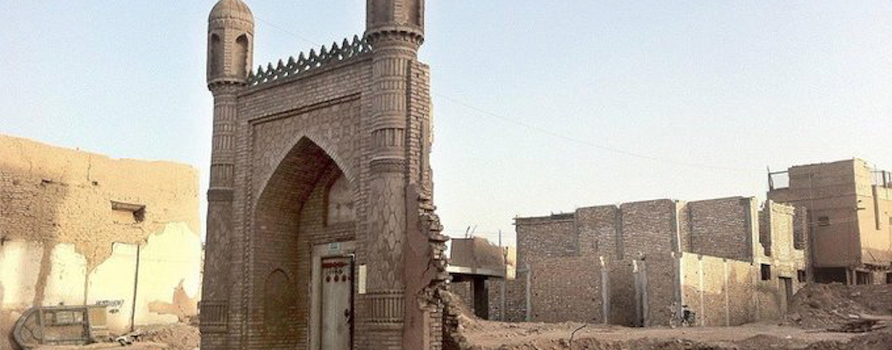WASHINGTON – A U.S. State Department official accused China of attempting to erase the Muslim identity of Uighurs by seeking to demolish or close places of worship in Xinjiang in northwest China.
The official, who spoke to VOA on the condition of anonymity, said the Chinese Communist Party in its campaign against the Uighur minority has removed religious symbols from places of worship, imposing strict surveillance on them.
“As part of its ongoing attempts to eradicate the Islamic faith and “re-educate” Muslims, Beijing has closed or destroyed mosques, shrines, burial grounds, and other Islamic structures, perhaps more,” the official told VOA.
“Mosques permitted to remain open have been stripped of certain features like minarets and domes and are heavily monitored by surveillance cameras and security personnel,” the official said, adding that Beijing’s acts have denied Muslims the ability to practice their faith in public.

An estimated 13 million ethnic Uighurs and other Turkic Muslim minorities are believed to live in the Xinjiang region.
The Chinese government since early 2017 has been accused of a harsh crackdown in the region through detention and forceful “re-education” of the people who are accused of being disloyal to the government’s ideology.
Chinese officials, however, have called the alleged detention program a “vocational” training and said their efforts in Xinjiang are aimed at curbing the threat of Islamic extremism.
The U.S. government and rights organizations say at least one million Uighurs are being held in the camps where they are exposed to torture and forced labor. Outside the camps, the minority population is put under stringent control where simple religious practices are prohibited.
According to an investigation by Uyghur (Uighur) Human Rights Project (UHRP), a D.C.-based organization funded by the National Endowment for Democracy, between 10,000-15,000 of mosques and other sites, amounting to about 40%, were demolished in each city, county and township all over Xinjiang since late 2016.
Bahram Sintash, who led the investigation, told VOA that in addition to local testimonies, satellite imagery of the sites confirm a “systematic destruction” of at least 140 Uighur religious places.

“I have been able to compile a list of over 140 mosques, shrines and cemeteries which have been confirmed or are suspected to have been fully demolished or desecrated since 2016,” Sintash told VOA in an interview.
The UHRP report found that among the demolished sites was Keriya Mosque in Hotan prefecture, a major historic building dating back to the 13th century and enlisted as a protected cultural site.
“Although China demolished many mosques in Xinjiang, it left some mosques untouched in big cities including the Korla Jama Mosque. In my findings, the mosque is one of the “selected” tourist destinations for Korla city. Therefore, the government kept the Korla Jama Mosque not for the sake of local Uighur communities and their prayer needs, but as pre-selected tour location to pretend its “protection” of Islam in that city and to lie to the international community and reporters,” said Sintash.
VOA could not independently verify UHRP’s report.
United Nations and human rights watchdogs in the past have continuously blamed Chinese officials for preventing independent bodies to have access to the region to investigate the alleged abuses. They say local population in the region are prevented from contacting the outside world, including their relatives who live in the diaspora.
The United Kingdom earlier this week urged China to give U.N. observers “immediate and unfettered access” to the region following a recent leak of classified Chinese government documents that rights groups say offer clear evidence of Beijing using detention camps as brainwashing centers.

Abduwaris Ablimit, a New York-based Uighur from Artush city in southern Xinjiang, said Uighurs living in the diaspora struggle to know the whereabouts of their loved ones stranded in Xinjiang due to communication restrictions. He said many of them turn to aerial imagery from airplanes to track changes made to their neighborhoods.
“When I was searching for my neighborhood mosque and other mosques around my hometown this year through google imagery, I was startled to find out that they were gone except for a few mosques.” Ablimit told VOA.
He said he had lost contact with his parents and brother in 2017, and one year later he found out that they were taken to “the concentration camps”.
Source: voanews.com

Leave a Reply